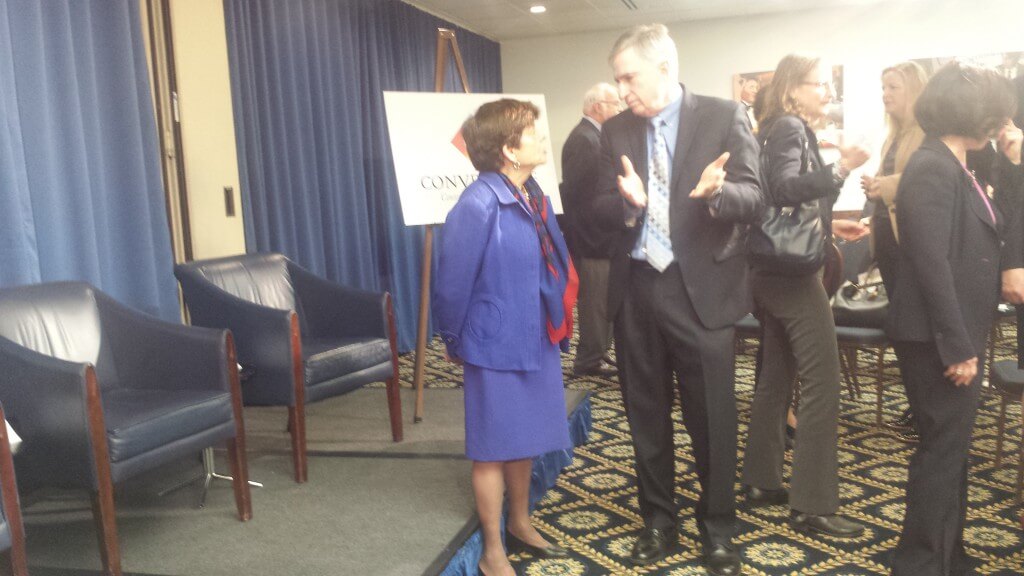
Alice Rivlin, keynote speaker, talks long-term care with Collaborative members before a press conference on the subject.
WASHINGTON — Paying for long-term care is an increasing worry for many Americans as more begin to need coverage — or think they will need it. The graying baby boomers are at the doorstep.
Almost 70 percent of people turning age 65 this year will need long-term care at some point, according to the Department of Health and Human Services. Long-term care is non-medical care focused on day-to-day aspects of living, such as eating, bathing and other daily tasks that get more difficult with age.
As the average age of the population continues to increase, the number of people needing that kind of attention is going to skyrocket.
Over 80 percent of people needing long term assistance get it from their family or friends. Trouble is, the number of people who need care is increasing much more rapidly than the number of people available to provide it – be they family members or paid caregivers, , according to Georgetown University’s Long-Term Care Financing Project at Georgetown.
Medicaid, intended to be a safety net, is becoming a default mechanism for many middle-class Americans who are unable to afford the cost of their care, say experts from the Long-Term Care Financing Collaborative., a group of experts working on way to improve care of the aging population.
Howard Gleckman, a senior fellow at the think tank, Urban Institute, said sometimes even Medicaid is not an option.
“People [are] falling through the cracks, making too much (money) to qualify for Medicaid, but not enough to pay for the long-term care they need,” Gleckman said at news conference Monday at the National Press Building.
Without major changes, as more people need care, fewer, proportionately, will be able to get it. And our current fallback isn’t working, experts say.
Legislators have sought to fix that problem in the past. The CLASS Act portion of the Affordable Care Act was intended to create a voluntary public long-term care insurance program. But the premiums required to make the program work were deemed by lawmakers to be too high to make it viable, so it was never implemented and repealed in 2013.
Gail Wilensky, an economist focusing on health issues and a member of the Long-Term Care Financing Collaborative, said tremendous pressure will be put on Medicaid under the existing system. Medicare, an insurance program for the elderly, will probably have to “take up some of the slack,” Wilensky said Monday.
Looking to provide a solution, Wilensky’s group, the collaborative, released a set of next steps leading to a public-private financing program.
“What we are proposing is a system that would encourage insurance, but would provide people with the safety net of knowing there is a public program if they need it,” Wilensky said.
The collaborative recommended imposing a payroll tax to finance the public-private insurance system. It also said the U.S. needs government funding to make life easier on family members who decide to care for their loved ones themselves.
A young family for instance, caring for an aging parent, could use the funding to pay for a nurse during the time they are away at work.
“In less than 14 years, every single member of the baby boomer generation will be 65 years of age or over,” William Galston, a member of the collaborative and senior fellow at the Brookings Institution, said. “… We don’t have a lot more time to waste.”


